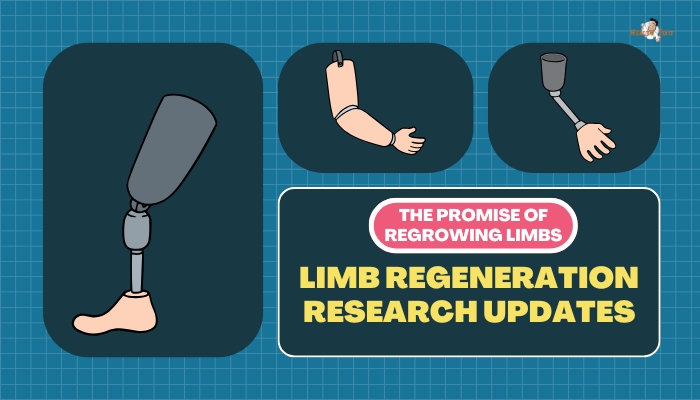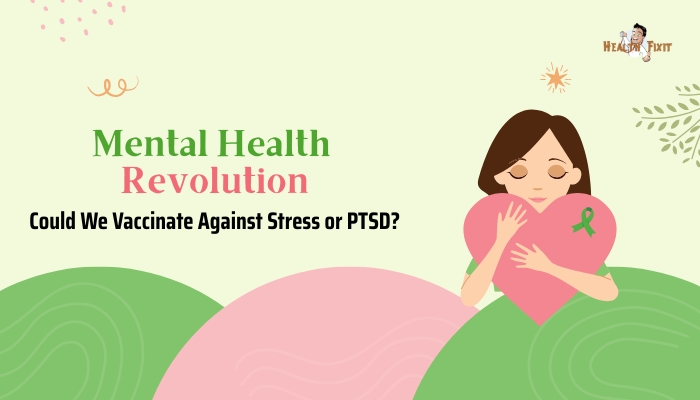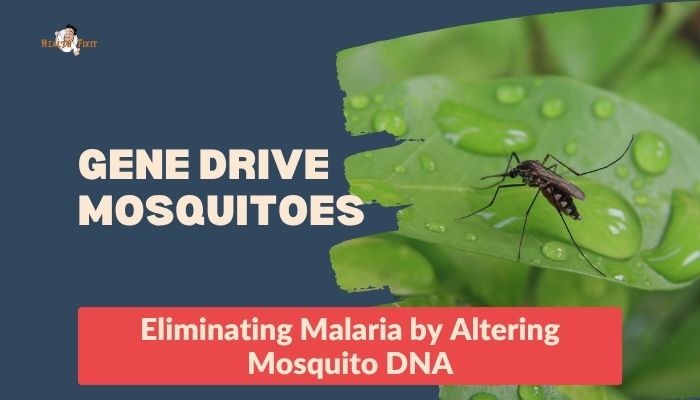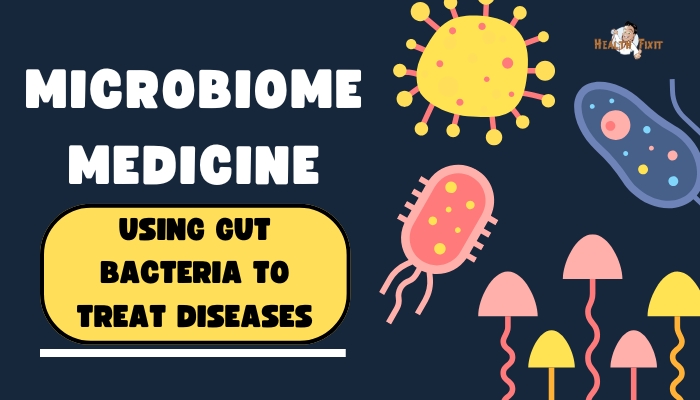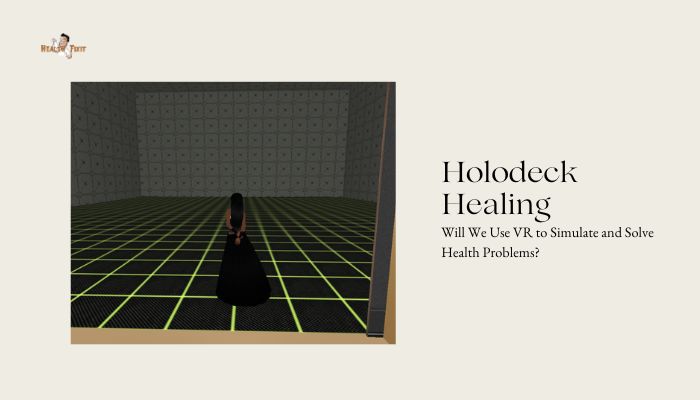Introduction
Human Immunodeficiency Virus (HIV) emerged as a global health crisis in the early 1980s. What started as clusters of rare infections among young individuals rapidly became a pandemic. In the decades since, researchers have discovered key aspects of HIV and developed antiretroviral therapy (ART).
These medications reduce viral load, prolong survival, and improve quality of life for people living with HIV. Despite these achievements, no widely accessible cure or fully preventive vaccine exists.
This article explores the latest insights into HIV biology, vaccine development, and potential cure strategies, and examines whether we might be approaching an HIV-free world.
The search for an HIV vaccine has proved challenging. HIV replicates rapidly, mutates often, and hides in various reservoirs. Researchers have identified many facets of the virus’s replication cycle that could be targets for drugs or vaccines.
Nevertheless, ongoing mutation, a lack of robust immune correlates of protection, and the virus’s ability to integrate into host DNA create formidable barriers.
In parallel, cure research aims to eradicate or permanently suppress HIV in the body. Approaches such as gene editing, immunotherapy, and “kick and kill” strategies reflect a wide range of scientific creativity.
Both vaccine and cure research rely on a global collaborative effort involving governments, academic institutions, private companies, and advocacy organizations.
Although no one can predict exact timelines, the volume of promising studies continues to expand.
The subsequent sections delve into the fundamentals of HIV, the state of ART, vaccine research, and various cure-focused strategies. We will also discuss social, economic, and policy challenges that affect the journey to an HIV-free world.
By exploring these details, readers can gain a comprehensive view of how close we may be to major breakthroughs.
HIV Overview and Current Treatment Landscape
How HIV Attacks the Body
HIV targets cells of the immune system, particularly CD4+ T lymphocytes. The virus enters these cells by binding to CD4 receptors and a co-receptor, usually CCR5 or CXCR4.
Once inside, HIV’s genetic material becomes integrated into the host cell’s DNA. This integration is a key obstacle to curing the infection. When the immune system tries to eliminate HIV, the virus mutates rapidly, generating variants that may evade immune responses.
Antiretroviral Therapy (ART)
Antiretroviral drugs block various steps of the HIV replication cycle. The main classes of ART include:
- Reverse Transcriptase Inhibitors (NRTIs and NNRTIs): Interfere with the enzyme that converts viral RNA into DNA.
- Protease Inhibitors: Prevent viral proteins from being cleaved into functional pieces, blocking viral maturation.
- Integrase Inhibitors: Stop the virus from integrating its genetic material into the host cell’s DNA.
- Entry Inhibitors: Hinder the virus from attaching to or entering target cells.
Combination ART typically uses three or more drugs from different classes. This multi-drug approach reduces the likelihood of resistance and effectively suppresses viral replication.
Patients on ART usually see their viral loads drop to undetectable levels, improving immune function and lowering transmission risk.
Yet ART is not a cure: the virus reactivates if treatment stops, because it remains in latent reservoirs such as resting memory T cells.
PrEP and Other Preventive Measures
Pre-exposure prophylaxis (PrEP) uses antiretroviral drugs in HIV-negative individuals at high risk of infection. Daily oral PrEP can reduce HIV acquisition by over 90%.
Newer approaches include long-acting injectables that may require dosing every few months.
Meanwhile, consistent use of condoms, needle exchange programs, and screening of blood products are other critical strategies to reduce HIV transmission. While these methods help mitigate infection rates, a vaccine could provide more permanent and scalable protection.
The Challenge of HIV Vaccine Development
Rapid Mutation and Viral Diversity
A major barrier to creating an HIV vaccine lies in the virus’s rapid mutation rate. Every replication cycle generates new variants.
Some of these variants can evade neutralizing antibodies and other immune defenses. The virus also exists as multiple clades or subtypes across different regions. A successful vaccine must contend with this diversity.
No Clear Correlates of Immune Protection
Vaccines for many pathogens rely on known immune correlates of protection, such as specific antibody levels that predict immunity. With HIV, scientists have not pinned down a single measurement that consistently forecasts whether someone is protected.
Both antibody-mediated and T-cell-mediated responses are important, yet it remains unclear which combination or threshold of immune response is most protective.
Ongoing trials measure multiple parameters—antibody binding, T-cell function, neutralizing breadth—and attempt to correlate them with reduced infection risk.
The Envelope Glycoprotein
The HIV envelope (Env) protein, specifically the trimeric structure of gp120 and gp41 subunits, mediates viral entry into host cells.
Env is covered with sugar molecules that shield crucial viral targets, making it harder for the immune system to generate effective antibodies.
Some researchers focus on “broadly neutralizing antibodies” (bNAbs) that recognize conserved regions on Env. However, coaxing the immune system to produce bNAbs consistently through vaccination has proved difficult.
Prominent HIV Vaccine Strategies
Subunit Vaccines
Subunit vaccines contain purified or recombinantly produced HIV proteins, usually specific parts of gp120 or gp41. By exposing the immune system to these antigens, the vaccine aims to elicit protective responses.
Subunit approaches generally minimize safety risks because they do not use the entire virus. However, subunit vaccines struggle to generate broad immunity if the viral protein is highly variable.
Viral Vectors
Some research uses nonpathogenic viruses as vectors to deliver HIV antigens. Adenovirus, canarypox, and modified vaccinia Ankara (MVA) have served in various trials.
The vector infects cells and expresses HIV proteins, generating robust T-cell responses. However, individuals may have preexisting immunity to the vector itself, reducing effectiveness. Also, producing strong antibody responses requires additional design considerations.
DNA and mRNA Vaccines
Nucleic acid vaccines involve injecting genetic instructions—DNA or mRNA encoding HIV antigens—so the body’s cells produce these proteins.
This may trigger both antibody and T-cell responses. mRNA technology has gained attention for other vaccines, spotlighting its rapid development and scalability.
Researchers hope that refining mRNA sequences and improving delivery methods can help overcome HIV’s complexity. Nonetheless, generating durable immunity against this virus remains a significant trial-and-error process.
Mosaic Antigens
To handle HIV’s extensive diversity, mosaic vaccines use computationally designed antigens. These antigens combine elements from multiple HIV variants in a single construct. Animal studies suggest mosaic designs can broaden immune responses, making them more effective at neutralizing diverse strains.
Early human trials have tested mosaic-based regimens, showing decent immunogenicity. However, a definitive success story that conclusively prevents HIV infection in large populations has not yet emerged.
Broadly Neutralizing Antibody (bNAb) Induction
Some researchers aim to train the body to make bNAbs similar to those discovered in a small subset of people with HIV (called “elite neutralizers”). These individuals naturally produce antibodies that block a wide range of HIV variants.
Scientists have characterized various bNAbs, mapping their binding sites on HIV Env. Vaccine designers attempt to mimic the multi-step maturation process that leads to these potent antibodies.
For instance, sequential immunizations present the immune system with different versions of HIV antigens to nudge antibody-generating B cells toward broad neutralization.
Key HIV Vaccine Trials and Lessons Learned
RV144 (Thai Trial)
One of the most discussed HIV vaccine trials is RV144, conducted in Thailand. It combined a canarypox vector prime and a gp120 protein boost.
Although it showed only about 31% protection, this was the first trial to report any positive protective effect. Researchers analyzed blood samples to identify immune markers associated with lower infection risk.
These findings shaped subsequent vaccine designs that enhanced specific types of antibody responses.
HVTN 702 (Uhambo Trial)
Building on RV144, the HVTN 702 trial tested a similar vaccine regimen in South Africa. Unfortunately, the trial stopped early due to lack of efficacy.
Investigators concluded that a more potent and durable response was needed, especially in a high-incidence region with different HIV subtypes. While disappointing, the trial offered data to guide improvements in vaccine design.
Imbokodo and Mosaico Trials
Researchers then turned attention to mosaic-based vaccines. Imbokodo (HVTN 705) tested a mosaic adenovirus-based prime and a gp140 boost in women across sub-Saharan Africa. Mosaico (HVTN 706) used a similar regimen in cisgender men and transgender individuals who have sex with men. Although Imbokodo did not meet its primary endpoint, these trials continue to provide important safety data and insights into mosaic vaccine performance. Mosaico ended early due to ineffectiveness in preventing infection, but analysis of immune responses remains valuable.
Next Steps
Lessons from these trials emphasize the complexity of HIV, revealing that partial protection requires multi-pronged strategies.
Many investigators have concluded that vaccine approaches may need to incorporate advanced immunogens, possibly in tandem with passive antibody infusion or novel adjuvants to enhance immunological strength.
Potential HIV Cure Strategies
In parallel with vaccine efforts, scientists focus on curing those already infected. Two main categories emerge:
- Functional Cure: Viral loads are maintained at extremely low or undetectable levels without ongoing ART. The virus remains in the body but does not cause disease or transmit easily.
- Sterilizing Cure: The virus is completely eliminated from every cell. No detectable HIV remains.
“Kick and Kill” Approach
HIV persists in resting memory T cells as latent reservoirs. The virus can remain dormant for extended periods. “Kick and kill” aims to reactivate latent HIV (“kick”), allowing immune responses or drugs to target actively producing cells (“kill”).
Agents such as histone deacetylase (HDAC) inhibitors have been studied for latency reversal. However, even if the virus is forced out of hiding, eliminating these newly active cells without harming healthy cells remains complicated.
This strategy often pairs with immune boosters (therapeutic vaccines or bNAb therapy) to clear reactivated cells.
Gene Editing and Cell Therapy
Gene editing tools like CRISPR-Cas9 could remove or disrupt HIV-related genes in infected cells. Alternatively, they might alter host genes crucial for HIV entry. For instance, some labs aim to knock out the CCR5 receptor to prevent new infections of T cells.
A small number of patients who received stem cell transplants from donors with a naturally mutated CCR5 gene (CCR5 Δ32) achieved long-term remission.
However, stem cell transplants carry high risk and are reserved for life-threatening cancers, not as a routine HIV treatment. Gene editing in simpler contexts (e.g., modifying patient’s own T cells ex vivo and reinfusing them) is an active area of research.
bNAb-Based Therapy
Broadly neutralizing antibodies can suppress HIV in a manner similar to ART. Infusions of these antibodies target multiple regions on the viral envelope, limiting the virus’s ability to mutate away from binding.
Researchers investigate whether these treatments can also reduce reservoir size or maintain viral suppression if ART is paused. Some early studies show promise, but the virus can develop resistance to specific bNAbs, implying that combination approaches may be essential.
Therapeutic Vaccines
A “therapeutic” HIV vaccine does not aim to prevent infection but to enhance immune responses in people already living with HIV.
If such a vaccine can train the immune system to control or eliminate infected cells, it might reduce or eliminate the need for daily ART.
Therapeutic vaccines often incorporate multi-epitope designs that alert T cells to a broad set of HIV antigens. They may also combine with latency-reversing agents or bNAbs to amplify overall impact.
Real-World Cases of HIV Remission
The Berlin Patient
Timothy Ray Brown, known as the Berlin Patient, received a stem cell transplant to treat leukemia in 2007. His donor had the CCR5 Δ32 mutation, preventing HIV from infecting new cells. After transplantation, Brown stopped ART yet remained HIV-free for years.
This case provided proof of concept for a sterilizing cure, though replicating it widely is not feasible due to the risk and complexity of stem cell transplantation.
Other Patients in Long-Term Remission
A few additional individuals, dubbed the London Patient and the Düsseldorf Patient, have achieved long-term remission after similar procedures.
These successes underscore that certain interventions can eradicate HIV or keep it suppressed without ART. Nonetheless, such cases remain rare.
The approach of stem cell transplantation carries significant toxicity and limited donor availability.
Post-Treatment Controllers
Post-treatment controllers are individuals who start ART early and later discontinue it under clinical supervision. Some maintain undetectable viral loads for extended periods.
This phenomenon may relate to smaller initial reservoirs or more robust immune defenses. Ongoing studies examine biomarkers that predict who might become a controller, hoping to replicate these outcomes through interventions like early ART plus immunotherapy or vaccines.
Social and Economic Barriers
Even if scientists develop a safe, effective HIV vaccine or cure, many barriers could delay widespread adoption.
- Access and Cost: Pricing of novel therapies can be high. Low- and middle-income nations may struggle to afford them without strong international funding and equitable licensing.
- Health Infrastructure: Administering advanced treatments, such as gene editing, requires specialized facilities and trained professionals. This infrastructure may be lacking in regions with high HIV prevalence.
- Stigma and Discrimination: HIV-related stigma can deter individuals from testing, seeking care, or adhering to treatment. A vaccine or cure alone will not eliminate social challenges.
- Political Will: Governments may vary in their commitment to HIV programs. Funding cuts or policy shifts can hamper research, distribution, and care delivery.
Addressing these concerns requires global partnerships. Initiatives such as The Global Fund to Fight AIDS, Tuberculosis and Malaria, the President’s Emergency Plan for AIDS Relief (PEPFAR), and community-led efforts remain vital.
The Road Ahead: Are We Close to an HIV-Free World?
Short-Term Prospects
In the short term, further refinement of vaccine candidates is likely. Trials continue to refine immunogen design, incorporate new adjuvants, and harness improved delivery platforms. Although major setbacks have occurred, each trial yields data that guide next-generation strategies.
Cure research will also advance as laboratories improve gene editing fidelity, test innovative latency-reversing agents, and explore new immunotherapies. Yet it is improbable that a universally protective vaccine or scalable cure will emerge immediately.
Medium-Term Goals
Within the next 5–10 years, some breakthroughs may surface:
- Combination Strategies: Vaccines or immunotherapies paired with bNAbs or targeted gene modifications might produce functional cures in select patients.
- Personalized Treatments: Personalized medicine could tailor interventions to an individual’s viral subtype, genetic profile, or immune system.
- Expanded Access to New ART Formulations: Long-acting injections, implants, and other user-friendly delivery methods may improve adherence and reduce new infections.
Robust clinical trials will remain essential. Researchers must gather long-term safety and efficacy data, especially for cutting-edge methods like CRISPR-based editing.
Long-Term Vision
A complete eradication of HIV on a global scale requires:
- Scalable Production: Manufacturing processes that deliver vaccines or treatments in high volumes at affordable prices.
- Comprehensive Implementation: Strong healthcare networks capable of distributing therapies to remote or underserved populations.
- Political and Social Support: Adequate funding, legislation, and educational campaigns to ensure acceptance of medical tools.
- Continued Surveillance: Monitoring for viral resistance or new strains emerging from changes in the virus’s genetic structure.
While it is premature to declare we have reached an HIV-free world, scientists’ understanding of HIV is deeper than ever before.
Vaccine designs incorporate sophisticated immunogens. Cure research embraces advanced molecular tools. With consistent funding, collaboration, and community involvement, an HIV-free future becomes more plausible over time.
Policy, Advocacy, and Community Engagement
Community-Led Trials and Outreach
Engaging communities in research fosters trust and improves trial participation. People at high risk for HIV often contribute essential insights on how to structure interventions.
Additionally, peer-based education helps reduce stigma and promotes consistent PrEP or ART use. This local involvement can boost vaccine or cure uptake if new tools emerge.
Intellectual Property and Licensing
Vaccine and drug pricing is influenced by patents and licensing agreements. Global health advocates argue for flexible licensing that allows generic manufacturers to produce interventions at low cost.
Ensuring widespread access to new HIV treatments may require novel financing mechanisms, tiered pricing, or royalty-free agreements in low-income settings.
Regulatory Pathways
Regulatory agencies such as the United States Food and Drug Administration (FDA) and the European Medicines Agency (EMA) have clear processes for approving vaccines and therapies.
For complex interventions like gene editing or novel immunotherapies, these regulatory paths can be lengthy. Policymakers may need to adapt rules or accelerate approvals under specific conditions. Balancing safety with urgency remains a critical task.
Conclusion
The fight against HIV has advanced from an era when a diagnosis often signaled a fatal outcome to one in which people living with HIV can achieve near-normal life expectancy on ART.
Researchers now envision a future with effective vaccines and potentially curative interventions. The nature of HIV, however, presents extraordinary scientific challenges.
Rapid mutations, deep viral reservoirs, and a high burden in regions with limited resources all complicate solutions.
Despite these obstacles, researchers continue to refine multiple approaches. Vaccine research includes subunit proteins, viral vectors, mosaic designs, and advanced immunogen engineering to elicit potent bNAbs.
Cure initiatives range from “kick and kill” to gene editing and immune-based therapies. The ultimate goal is to either prevent or eradicate HIV, thus moving us closer to a world without this virus.
Many experts remain cautiously optimistic. Major vaccine trials have shaped the next generation of designs. Remission in a handful of transplant recipients demonstrates that HIV eradication is biologically possible, albeit with approaches that are still not suitable for large-scale use.
If science continues to expand knowledge of HIV immunology, gene editing, and advanced drug delivery, breakthroughs may arise.
However, any scientific progress must go hand in hand with practical considerations. Access, equity, and sustained political commitment are mandatory to make these tools available to everyone who needs them.
Only through a concerted global effort—spanning policy, funding, research, and community engagement—can we envision reaching an HIV-free world.
Given ongoing momentum, the possibility of that reality has never been clearer, even though much work remains.
References
- Barre-Sinoussi F, Chermann JC, Rey F, et al. Isolation of T-lymphotropic retrovirus from a patient at risk for acquired immune deficiency syndrome (AIDS). Science. 1983;220(4599):868–71.
- Gallo RC, Salahuddin SZ, Popovic M, et al. Frequent detection and isolation of cytopathic retroviruses (HTLV-III) from patients with AIDS and at risk for AIDS. Science. 1984;224(4648):500–3.
- Joint United Nations Programme on HIV/AIDS (UNAIDS). Global HIV & AIDS statistics — Fact sheet. 2023.
- Cohen MS, Chen YQ, McCauley M, et al. Prevention of HIV-1 infection with early antiretroviral therapy. N Engl J Med. 2011;365(6):493–505.
- Grant RM, Lama JR, Anderson PL, et al. Preexposure chemoprophylaxis for HIV prevention in men who have sex with men. N Engl J Med. 2010;363(27):2587–99.
- Burton DR, Hangartner L. Broadly neutralizing antibodies present new prospects to counter highly antigenically diverse viruses. Science. 2016;337(6091):183–6.
- Rerks-Ngarm S, Pitisuttithum P, Nitayaphan S, et al. Vaccination with ALVAC and AIDSVAX to prevent HIV-1 infection in Thailand. N Engl J Med. 2009;361(23):2209–20.
- National Institute of Allergy and Infectious Diseases (NIAID). Imbokodo HIV vaccine trial. 2022.
- Tebas P, Stein D, Tang WW, et al. Gene editing of CCR5 in autologous CD4 T cells of persons infected with HIV. N Engl J Med. 2014;370(10):901–10.
- Hütter G, Nowak D, Mossner M, et al. Long-term control of HIV by CCR5 Delta32/Delta32 stem-cell transplantation. N Engl J Med. 2009;360(7):692–8.
- Deeks SG. HIV: Shock and kill. Nature. 2012;487(7408):439–40.
- Barouch DH, Tomaka FL, Wegmann F, et al. Evaluation of a mosaic HIV-1 vaccine in a multicentre, randomised, double-blind, placebo-controlled phase 2 trial (Imbokodo). Lancet HIV. 2021;8(6):e347–e360.


